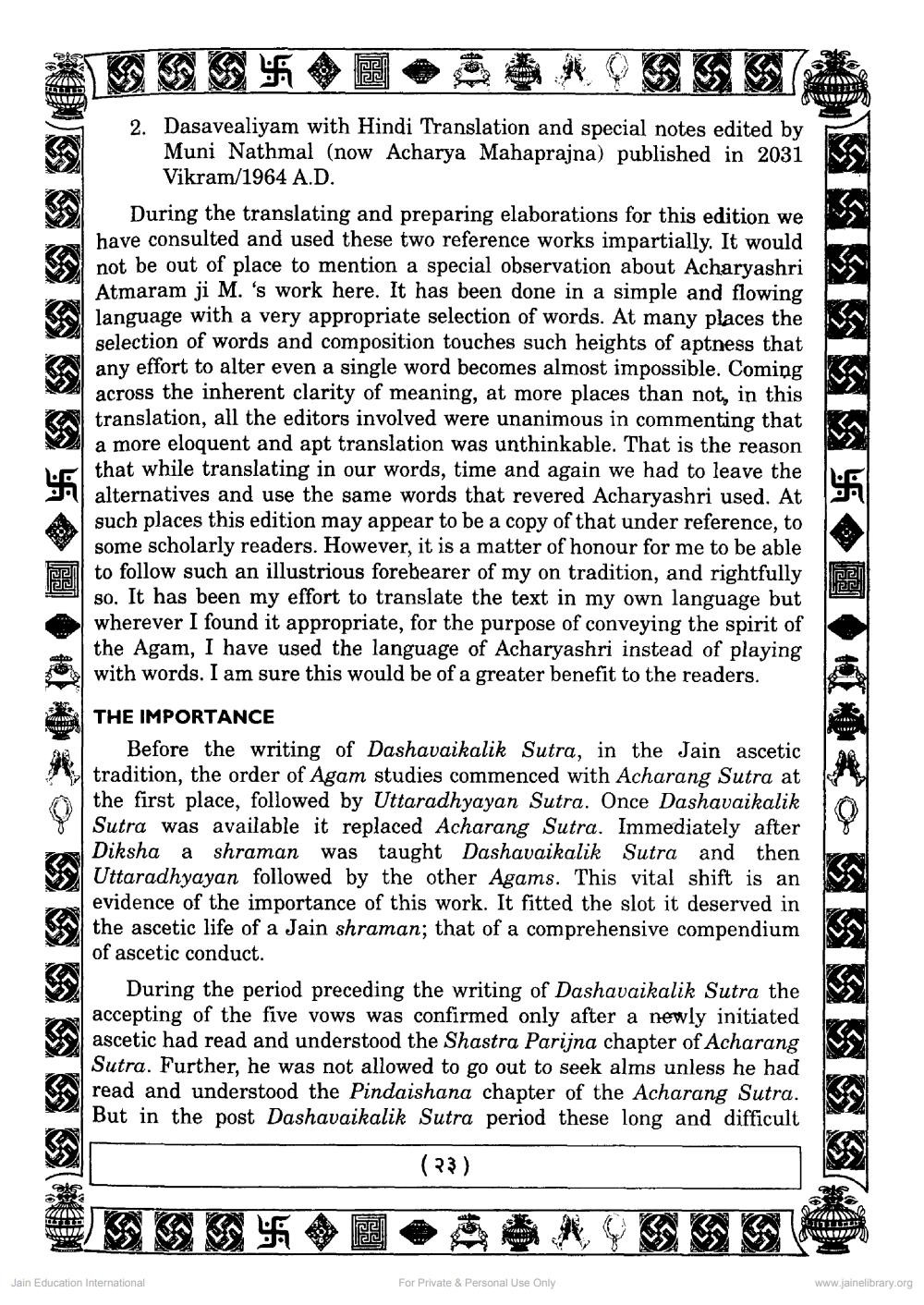________________
Uw) 2. Dasavealiyam with Hindi Translation and special notes edited by
Muni Nathmal (now Acharya Mahaprajna) published in 2031
Vikram/1964 A.D. During the translating and preparing elaborations for this edition we have consulted and used these two reference works impartially. It would not be out of place to mention a special observation about Acharyashri Atmaram ji M. 's work here. It has been done in a simple and flowing language with a very appropriate selection of words. At many places the selection of words and composition touches such heights of aptness that any effort to alter even a single word becomes almost impossible. Coming across the inherent clarity of meaning, at more places than not, in this translation, all the editors involved were unanimous in commenting that a more eloquent and apt translation was unthinkable. That is the reason that while translating in our words, time and again we had to leave the alternatives and use the same words that revered Acharyashri used. At such places this edition may appear to be a copy of that under reference, to some scholarly readers. However, it is a matter of honour for me to be able to follow such an illustrious forebearer of my on tradition, and rightfully so. It has been my effort to translate the text in my own language but wherever I found it appropriate, for the purpose of conveying the spirit of the Agam, I have used the language of Acharyashri instead of playing with words. I am sure this would be of a greater benefit to the readers.
** Ef
THE IMPORTANCE
Before the writing of Dashavaikalik Sutra, in the Jain ascetic tradition, the order of Agam studies commenced with Acharang Sutra at the first place, followed by Uttaradhyayan Sutra. Once Dashavaikalik Sutra was available it replaced Acharang Sutra. Immediately after Diksha a shraman was taught Dashavaikalik Sutra and then Uttaradhyayan followed by the other Agams. This vital shift is an evidence of the importance of this work. It fitted the slot it deserved in the ascetic life of a Jain shraman; that of a comprehensive compendium of ascetic conduct.
During the period preceding the writing of Dashavaikalik Sutra the accepting of the five vows was confirmed only after a newly initiated ascetic had read and understood the Shastra Parijna chapter of Acharang Sutra. Further, he was not allowed to go out to seek alms unless he had read and understood the Pindaishana chapter of the Acharang Sutra. But in the post Dashavaikalik Sutra period these long and difficult
(73)
Jain Education International
For Private & Personal Use Only
www.jainelibrary.org




